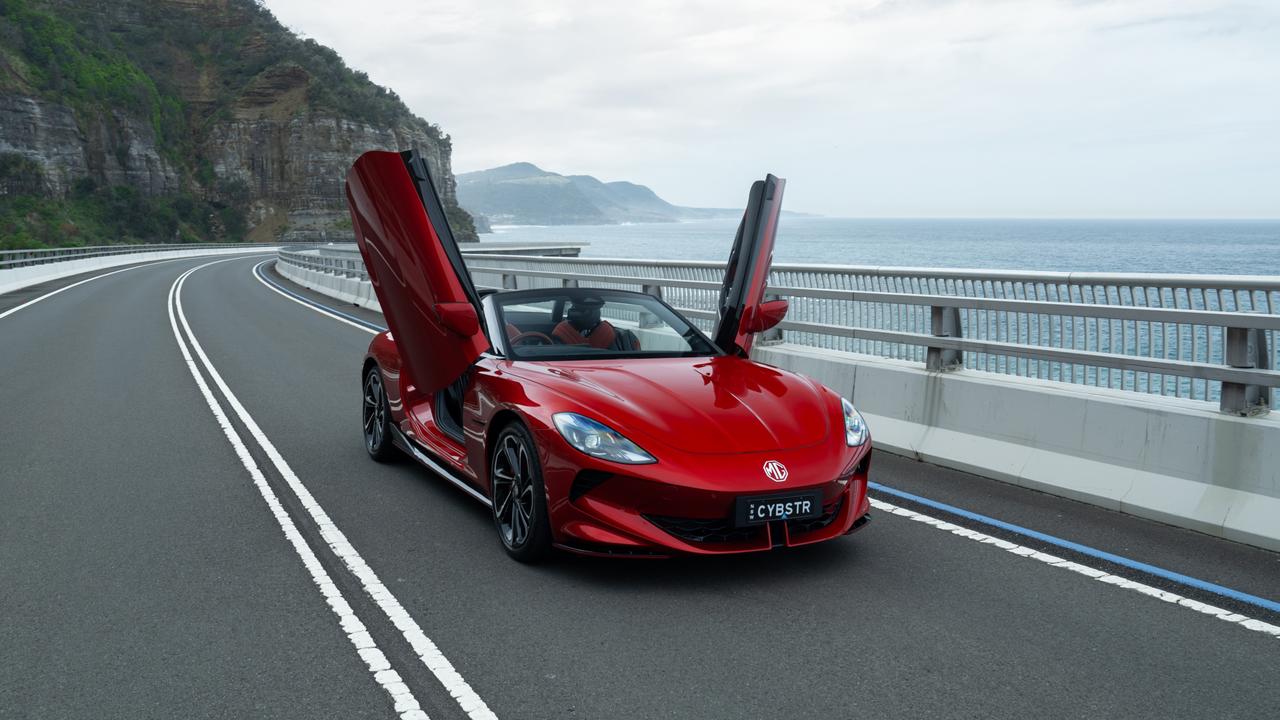Hyundai Palisade review: Big SUV gives families room to grow
The latest family-hauler from Hyundai packs some world class features into its new Toyota Kluger and Mazda X-9 rival.
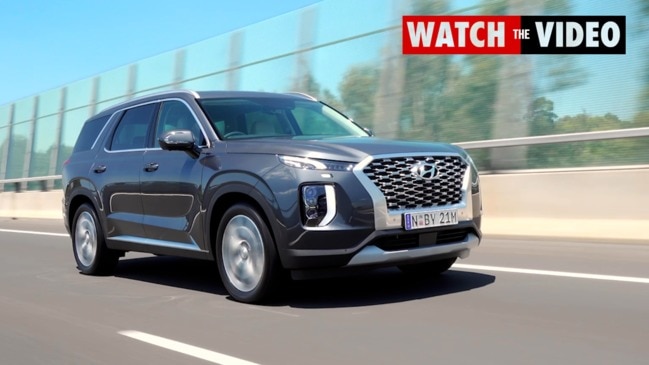
New Cars
Don't miss out on the headlines from New Cars. Followed categories will be added to My News.
The Hyundai Palisade feels like an airliner.
Pilot and co-pilot ride upfront, in charge of navigation, entertainment, safety and communication through an intercom linked to the back speakers.
Like a captain chatting with the control tower without passengers listening, the driver can use a “quiet mode” to play phone calls, music or podcasts through the front speakers without disturbing those in the back.
Two middle chairs spaced apart resemble business class accommodation with loads of head, leg and elbow room, plus climate control and priority boarding access through the rear doors.
Three economy passengers can wedge into the third row, and just like a long-haul airliner, it’s a space best left to compact or low-fuss customers.
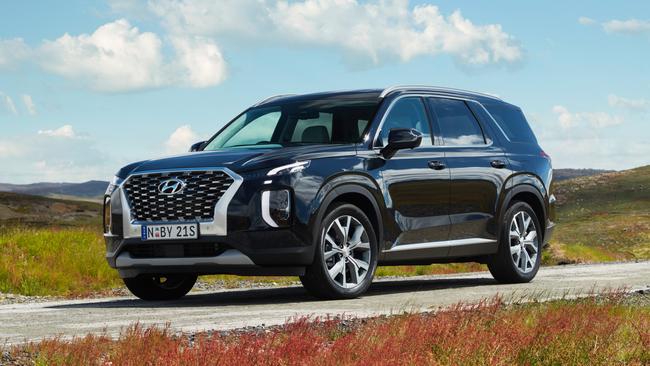
An eight-seat version with two rows of three-seat benches feels more Jetstar than Qantas, though passengers are unlikely to complain.
Importantly, everyone has access to USB power, air vents and side airbags — full coverage for all passengers, unlike the smaller Santa Fe that only offers partial airbag coverage for the third row.
Every seat has leather trim and there are 16 cup holders to keep passengers of all ages hydrated.
Longer, wider and taller than the Santa Fe, the new model has an extra 13 centimetres of space between the front and rear wheels.
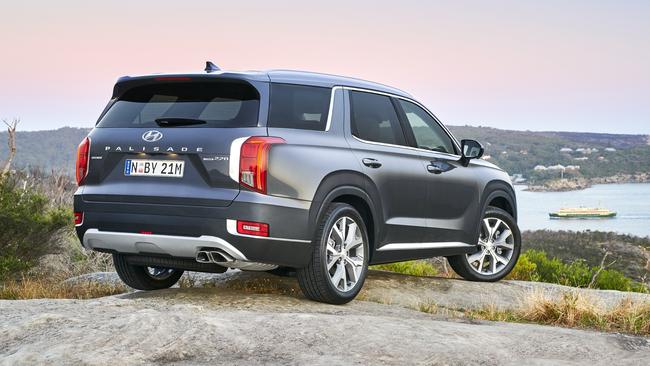
Pitched as a people mover for folks who can’t see themselves in a daggy van or don’t want the truck-like dynamics of a rugged four-wheel-drive, the Palisade is similar to Mazda’s seven-seat CX-9 or the Toyota Kluger.
Customers can choose from two engines that feel more adequate than outstanding.
A 3.8-litre petrol V6 uses 10.7L/100km to produce 217kW and 355Nm of torque, driving the front wheels through an eight-speed automatic gearbox.
Hyundai expects plenty of customers to choose a 2.2-litre four-cylinder turbo diesel that needs 7.3L/100km of fuel to make 147kW and 440Nm, sending drive to all four wheels. It costs an extra $4000 over the front-drive V6.
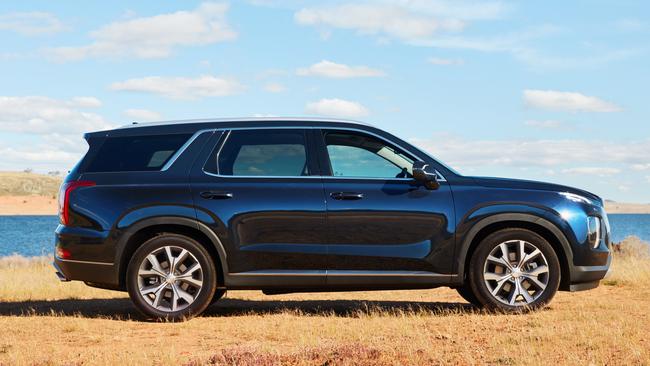
The Palisade costs $60,000 plus on-road costs (about $65,000 drive-away) in entry-level petrol trim. The entry-level car has a full suite of driver aids including auto emergency braking in forward and reverse, active cruise control, blind-spot monitoring, rear cross-traffic alert and more.
Leather trim is standard, as is a 10.25-inch touchscreen with satnav, Apple CarPlay, Android Auto and a 12-speaker premium stereo.
Customers who want more can spend an extra $11,000 to get the Palisade Highlander, swapping the standard car’s 18-inch wheels for 20-inch rims. Black leather makes way for higher-quality cream or burgundy hide and quality extras include a sunroof, rear window shades, wireless phone charging, electric passenger seat adjustment and rear-seat heating. The no-cost choice of seven- or eight-seat layout is restricted to the Highlander.
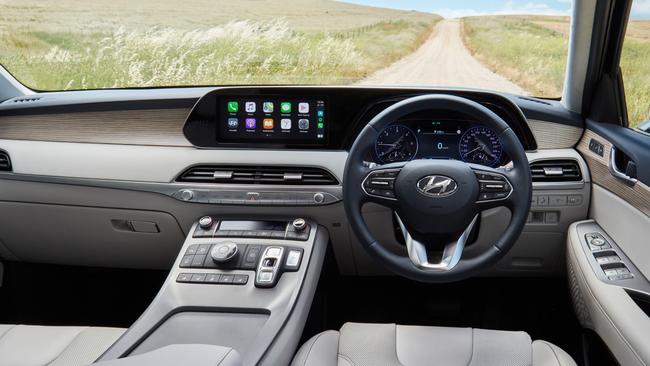
The entry-level Palisade costs about $15,000 more than a basic Santa Fe with cloth trim, while the diesel Highlander asks about $10,000 more than its smaller cousin.
Some technology offered in the Santa Fe isn’t on the menu here — the Palisade has been on sale in the US since 2018, so it misses out on the wireless CarPlay, head-up display, full-width digital dashboard, updated engine and efficient eight-speed dual-clutch auto of the newly updated Santa Fe.
Expect those to come in a midlife refresh down the track.
Our test drive ran from Sydney to Canberra on a mix of roads including suburban streets, motorways and country routes.
The big unit impressed on the road, making effortless progress on major motorways. Active cruise control and lane keeping assistance work well on 110km/h motorways, but the safety systems can be invasive on country roads.
Diesel power feels like a better bet in Australia — it’s quieter, runs further between stops and the all-wheel-drive system offers a traction advantage on slippery surfaces.
Huge on the outside, the Palisade is a little lighter than it looks, weighing in at a little less than two tonnes. That translates to a car-like driving experience with less body roll than some rivals, along with good control that doesn’t lurch or heave on tricky country roads.
Our test car rode well with slightly noisy suspension — bumps were heard more than felt. Shift paddles are standard, but we didn’t use them as the transmission’s shift logic was spot on.
VERDICT 4/5
Hugely spacious and sweeter to steer than rugged four-wheel-drives, the Hyundai Palisade should hit the spot for growing families.
HYUNDAI PALISADE DIESEL VITALS
Price: About $70,000 drive-away
Warranty/servicing: 5-year/unl’td km, $2345 for 5 years
Engine: 2.2-litre 4-cyl turbo diesel, 147kW/440Nm
Safety: Not yet rated, 6 airbags, front and rear auto emergency braking, active cruise control, lane-keep assist, blind-spot monitor, rear cross-traffic alert
Thirst: 7.3L/100km
Spare: Full size
Cargo: 311 litres
Originally published as Hyundai Palisade review: Big SUV gives families room to grow

